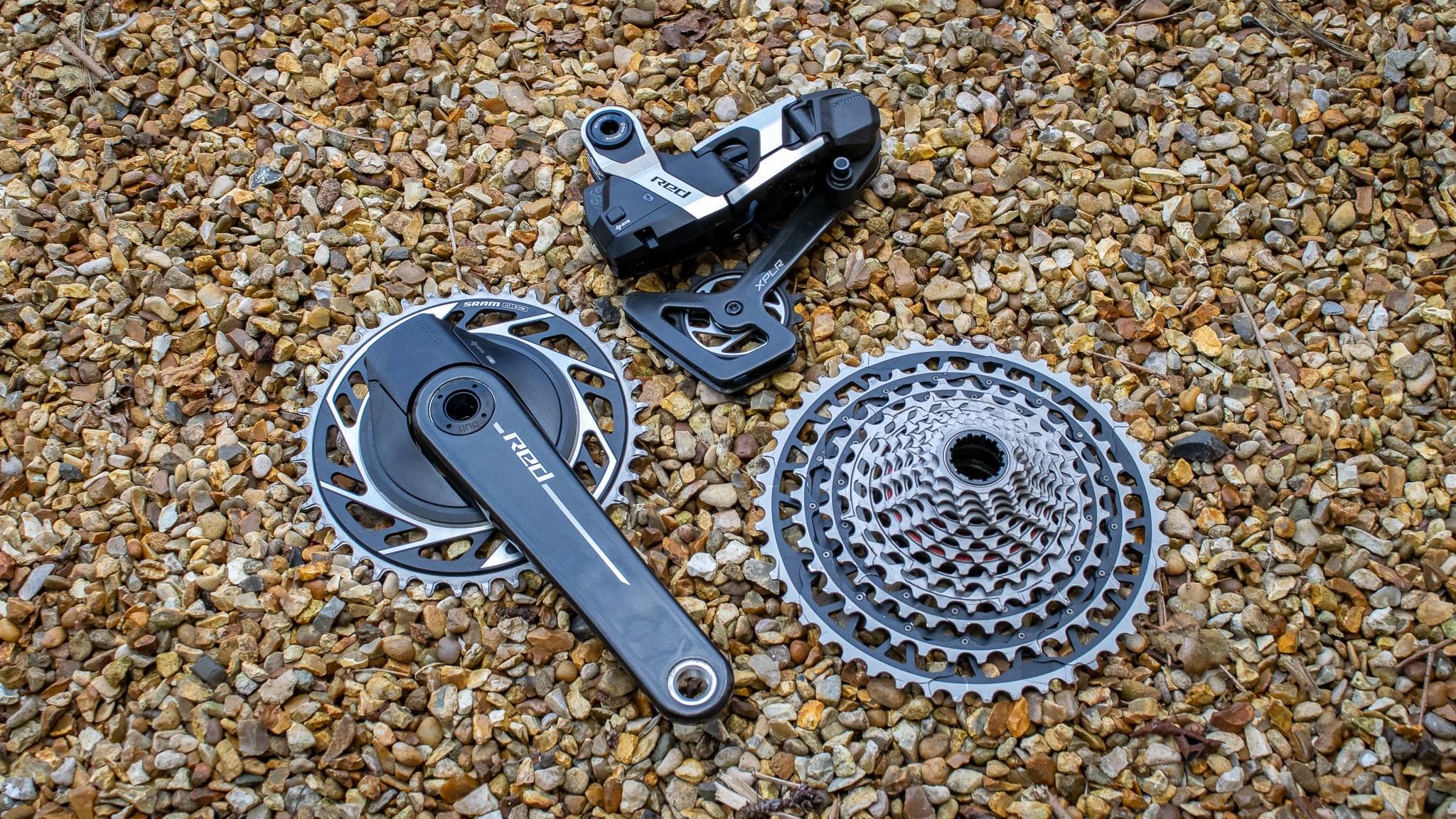

Price: $4,031 w/Power Meter option; $3,581 w/o Power Meter
Speed: 1 x 13 speed
Weight: 2706 grams
Chainring sizes: 38,40,42,44,46T
Cassette sizes: 10/46T - 13 speed
SRAM Red XPLR AXS launched today, becoming SRAM’s new top-tier gravel-specific groupset. It's been a busy year for the American brand, it launched the Red AXS groupset in March, at the same time as the third-gen Hammerhead Karoo.
A few months on, the brand has now announced the gravel-specific version of the RED AXS groupset. If you aren’t familiar, ‘XPLR’ arrived back in 2021 and consisted of a collection of components from SRAM and SRAM-owned brands RockShox and Zipp, that had a gravel and off-road focus. For clarity now, Red AXS is the roadgoing groupset, while the new Red XPLR AXS is the new 1x gravel-specific groupset which has launched today.
Ok, so what are the key take-home differences? First up, Red XPLR AXS is 1 x 13 speed. That’s right, we’ve got 13 sprockets at the rear now, but thanks to some clever design the groupset uses the existing Red 12-speed chain, there’s more on this below. The new components that make up the XPLR groupset are the 13-speed cassette, rear derailleur and new chainset. The shifters, calipers, chain and rotors are shared with Red AXS.
You can get stuck into all the new groupset tech details, pricing and weights in our news story covering the new SRAM Red XPLR AXS groupset, or read on for our review.
I attended the UK-based launch of the groupset recently and have been testing it out since. SRAM - Zipp specifically - has also launched a new gravel-specific wheelset at the same time, which has a monster 32mm internal width. You can get the scoop on those in my review of the wheelset.
The total groupset is going to price up at $4,031 with a dual-sided power meter and weighs in at a claimed 2,488 grams, a saving of 102 grams over the existing Red XPLR AXS.
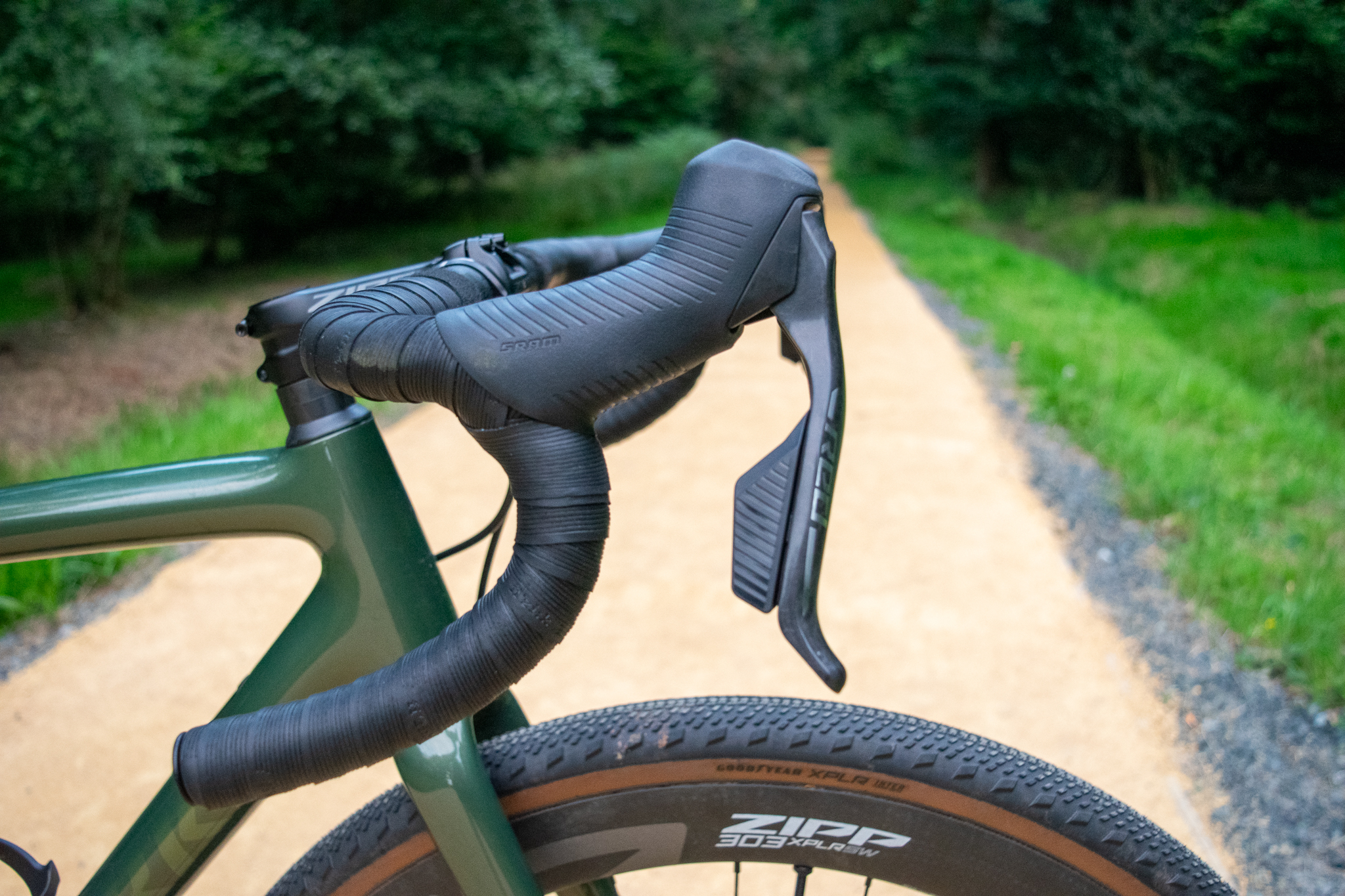
Design and specification
Red XPLR AXS shares componentry with Red AXS so the groupsets naturally look very similar and 'match' if you like.
The gear shifters, brake calipers, rotors and chain are exactly the same as those that can be found on the road-specific groupset. Details of which you can find in my SRAM Red AXS road groupset review, written a few months ago. The new features like the bonus shift buttons, and improved brakes all carry over here.
The brand-new XPLR gravel-specific bits are the chainset, rear derailleur and cassette which we will get to. There's carbon fibre and aluminium on show again, and I'll call it here: I think more silver componentry will be a trend in the road and gravel worlds: there's plenty to be found here, as well as on the hubs of new components like the Roval CLX Team II wheels. Everything, at least for me, looks modern and techy and the silver brake calipers have received a few admiring comments from my riding mates.
Straight off the bat, there are some frame requirements needed if you think you might be interested in the new groupset. If you're buying a complete bike, this won't be an issue for you, but Red XPLR AXS requires a minimum chainstay length of 415mm, frames need a 47.5mm chainline and must also feature the UDH hanger interface. There is a healthy list of UDH-spec frames on the market already, but more will undoubtedtly follow in time.
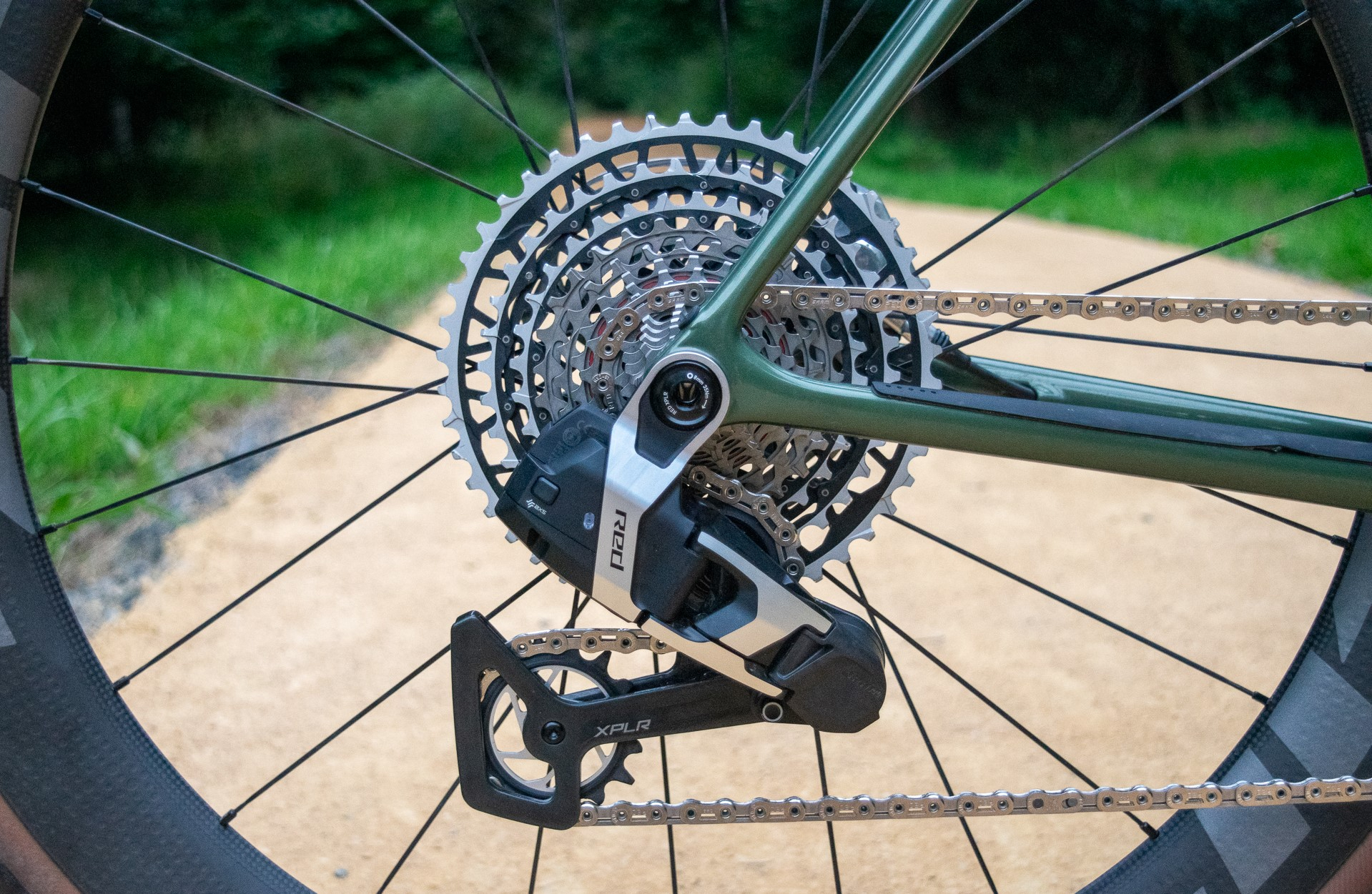
So, to the new bits, which borrow tech from SRAM's Eagle MTB equipment. First up is the new Red XPLR derailleur which is very interesting. The new unit is far larger than the Red AXS road mech and uses a full-mount UDH mount to attach to the frame.
The XPLR derailleur doesn't have limit screws or a b-tension adjustment (this is the gap between the largest sprocket and the top pulley wheel). This means no mechanical adjustments of any kind are required, beyond attaching the derailleur to your frame. The derailleur's range of movement is fixed now in part thanks to the full mount system, and so isn't relying on setting limit screws or traditional hanger alignment to ensure proper shifting setup.
Before you open a warranty case or pick the phone up to call the bike shop, the XPLR derailleur actually looks bent when viewed from behind. SRAM says this is due to the derailleur cage being tuned to align the pulley wheels to the chainring in every sprocket, reducing vibration and noise. It's meant to look like this, and doesn't create any extra noise (I've included a picture below).
The battery also loads horizontally instead of vertically and is really tucked out of the way. There are 14 and 16-tooth derailleur pulley wheels, and the lower uses SRAM's 'magic pulley wheel' to keep rotating and clear blockages or debris if they enter the pulley from the side.
The clutch's spring tension has been updated and now features a stronger spring action than the existing XPLR derailleurs to further help chain retention. The Red XPLR derailleur has moved closer to SRAM MTB components in this department and the derailleur arm is pretty firm now. It's also replaceable and easy to remove, I've seen this done and it takes seconds.
SRAM will also offer replaceable spare parts for the cage assembly, pulley wheels, upper and lower outer parallelogram, full mount, and battery latch. This is an expensive derailleur at $700 and it's nice to know it can be disassembled and spare parts are available to keep you going and keep it looking nice if you damage or scratch yours up.

The groupset only has one cassette option, this is the XPLR XG-1391 13-speed cassette which is one piece and consists of sprocket sizes of 10/11/12/13/15/17/19/21/24/28/32/38/46. Note the nice tight spacings at the sharp end which should help when racing or riding quickly but the low gears are there when you need them.
Why the move to 13 sprockets? I asked SRAM about this and they told me the 13-speed cassette allowed them to solve some issues around 12-speed cassette sprocket sizing and potential gaps or jumps in sizes. They also acknowledged that there was an element of 'because one more'.
I'd also be inclined to think it also puts them on level pegging with the already-13-speed - and popular - Campagnolo Ekar gravel groupset when it comes to spec sheet debates and groupset top trumps, without having to roll out a new 13-speed chain and associated bits.
The 13-speed cassette works perfectly with the 12-speed Red AXS chain. Surely pre-empting internet forum "I've tried it and it works" threads pre-launch.
Joking aside, SRAM has been able to execute this thanks to two areas. One is the use of the UDH full mount standard, which frees up a little space on the outboard side, Inboard some clever machining and design at the cassette's largest sprockets have saved some space and there is plenty of clearance between the sprockets and spokes. This way the spacing stays the same for the 12-speed flat-top chain to play nicely.
Last up in the new components department is the XPLR chainset. It shares the same lightened carbon fibre crankarms as Red AXS and there are power meter and standard configurations available.
The option list for possible options and specs is very long due to the sheer number of them. The non-power meter chainset uses direct mount rings, but notably, the power meter spider uses threaded, replaceable 'Thread Mount' chainrings instead of the integrated ones found on Red AXS.
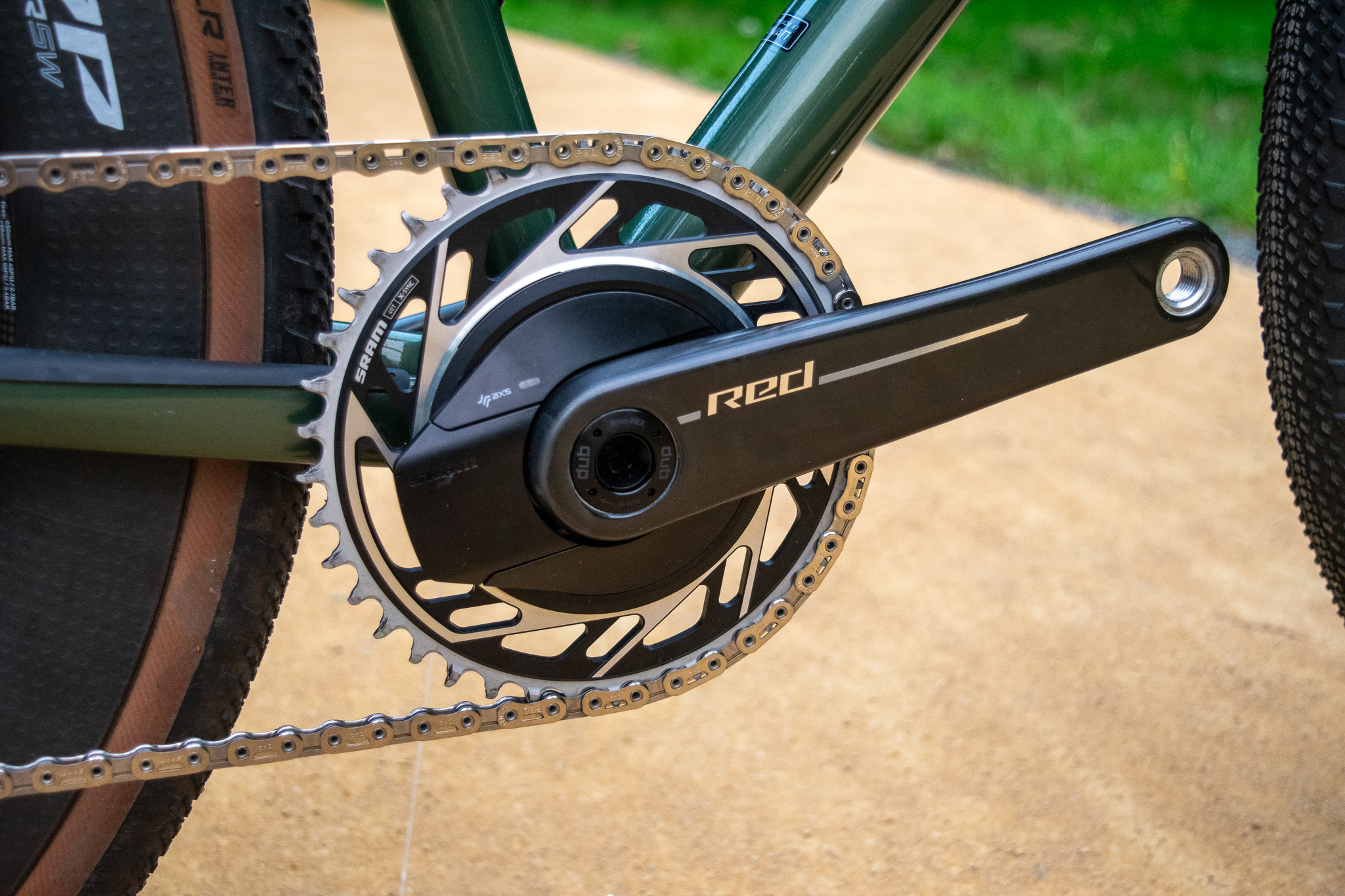
Performance
As discussed, Red XPLR AXS shares some components with the road-going Red AXS. Concerning the gear shifters and braking my opinion hasn't changed in the slightest, on the road or off. The gear shifter shape is really comfortable off-road, and a highlight again for me is the really excellent braking feel and performance. The light braking action is a real ally off-road and provides excellent control in more technical sections, I’m all for it.
Shifting has also been very good. I’ve experienced zero chain drops, bad shifts, slips or issues of any kind. I've had to think a good deal about what my take home of the XPLR groupset is and ultimately I think the equipment just elevates off-road performance to a point where you don't really have to worry about anything.
I haven't had to think too much at all, just ride. The gears I've needed have been there when I needed them, and shifting under load or in a rush is always dependable. Interestingly the electronic shifting sound of the XPLR derailleur is different and slightly louder than Red AXS. I asked SRAM about this and it's due to the proprietary gearbox and internals, highlighting that it isn't a cut-and-paste Red AXS in a different body.
I also can't think of a single time the chain was rattling off the chainstays and making loads of noise, remember those days? I just haven't heard a peep out of it, and I've ridden hard down plenty of rocky descents. It's a big tick for the updated clutch as far as I'm concerned.
I've tested the groupset on the road, off it, in sand, and mud, on fast hardpacked gravel and fighting my way through undergrowth on some of my overgrown local trails. It has not missed a beat and has just worked, the braking is excellent and the shifting is easily fast and smooth enough for me, as I say: zero chain drops or issues of any kind.
I've done my best to upset it and ride the bike hard to test it. The only poor shifts I've really experienced have been under extreme load up a steep gravel climb at a walking pace or slower, this was me deliberately trying to upset things though.
Gravel riding, as we know, is wide-ranging. I've definitely ridden mountain bike terrain during my test period and the groupset was near enough faultless, only thinking twice on quick, snatched shifts entering a steep, technical climb or dropping down a few sprockets to keep momentum as the trail changes. For less extreme terrain or generally, fast, wide-open gravel riding or racing, this groupset will barely blink.
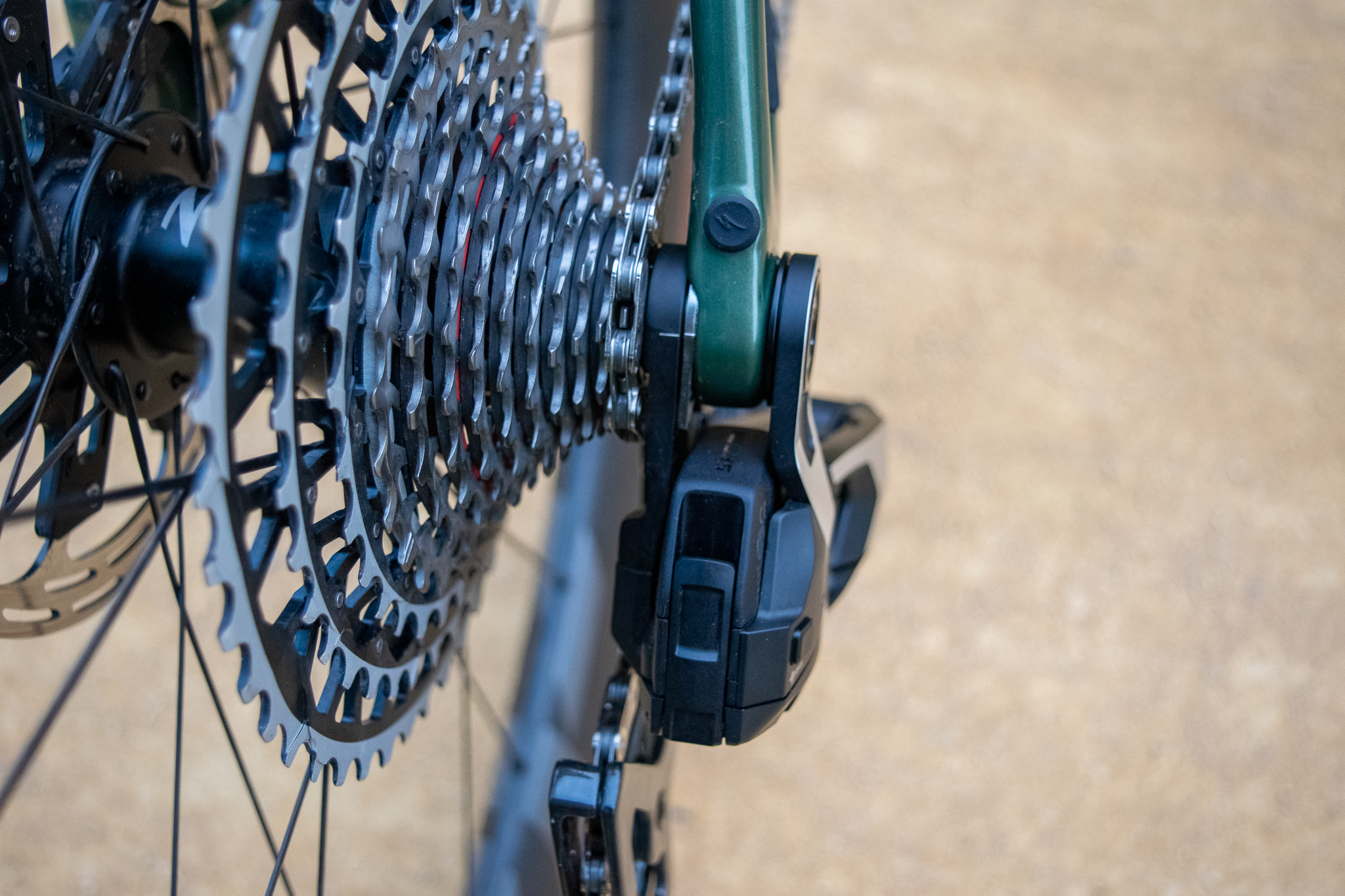
I don't think there are too many points to mention regarding living with the groupset but here are some of my thoughts, such as they are.
After hours of sandy riding at the groupset launch in the Surrey hills, I could hear plenty of graunching in and around the derailleur mount and interface when washing the bike at home. I'd be keeping this area very clean and greased if it was my own bike, as mud, grit and sand sitting in amongst carbon dropout and the derailleur bolt and interface probably won't be great long term. A plastic sleeve sits in between the derailleur bolt and carbon dropout, but even so, keeping this area clean will only be a good thing.
Red AXS power meter chainsets have drawn criticism for the non-replaceable integrated power meter and chainrings. The replaceable threaded chainrings here should please people and help lower potential running costs. A specific tool is needed to replace the chainrings, but it's not expensive and the job takes minutes, I saw it done first-hand at the launch. Aero 1x chainrings are also compatible with the chainset, should riders want to use one for racing.
The drivetrain components in this groupset, especially the cassette, are not cheap. This goes for any drivetrain if you want to look after it but keeping things clean and correctly lubricated will only stand you in good stead, protecting your investment and making the riding experience better. You don't want to be replacing too many $600 cassettes.
SRAM also mentioned the popularity of gravel racing now and riders travelling all over to events, and with that in mind, removing the rear derailleur is very simple. It's a slightly different process to a standard hanger and derailleur but there's one fewer part and the setup is so much burlier than a replaceable hanger. I think it will give riders more confidence when travelling.

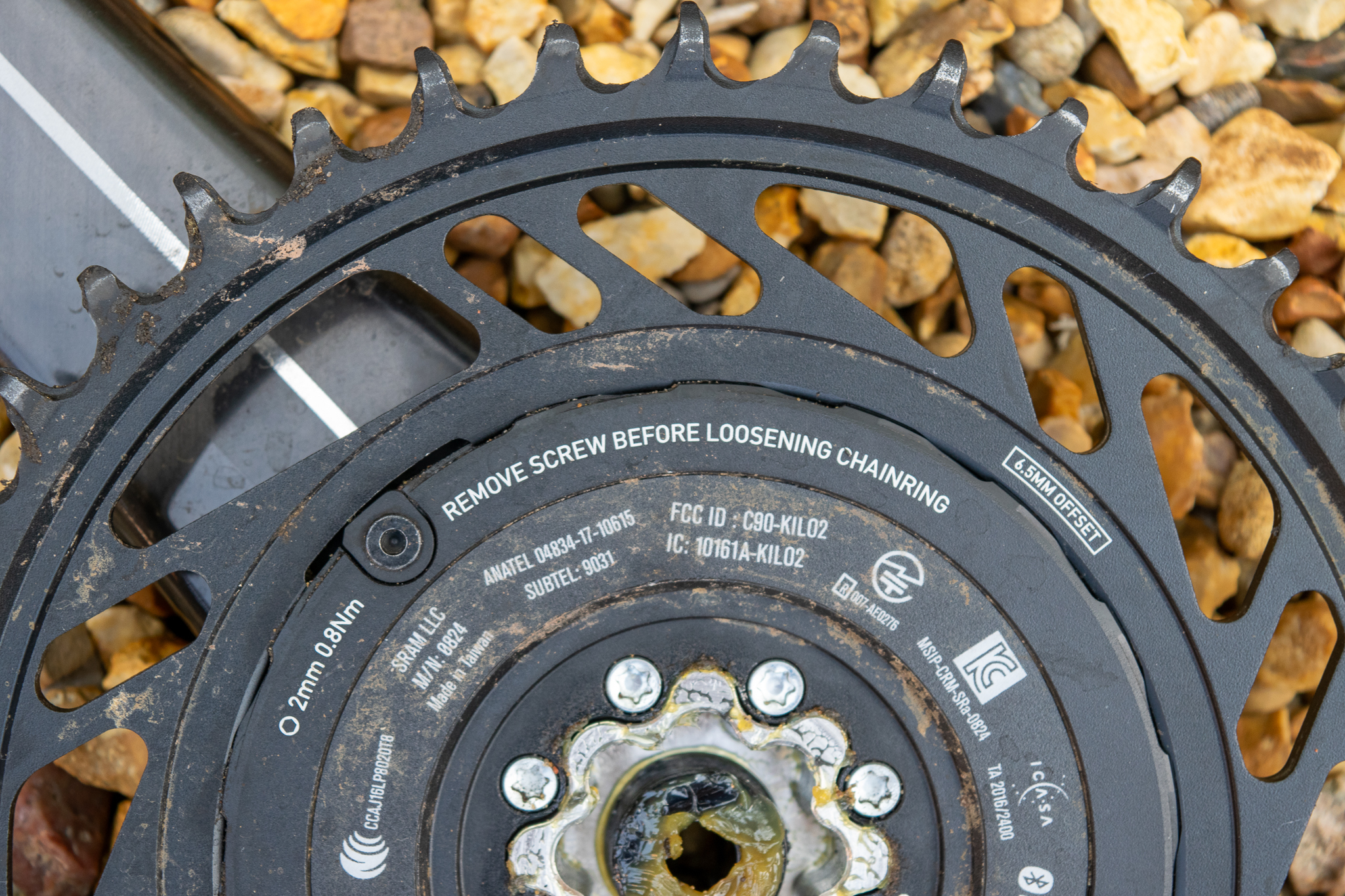
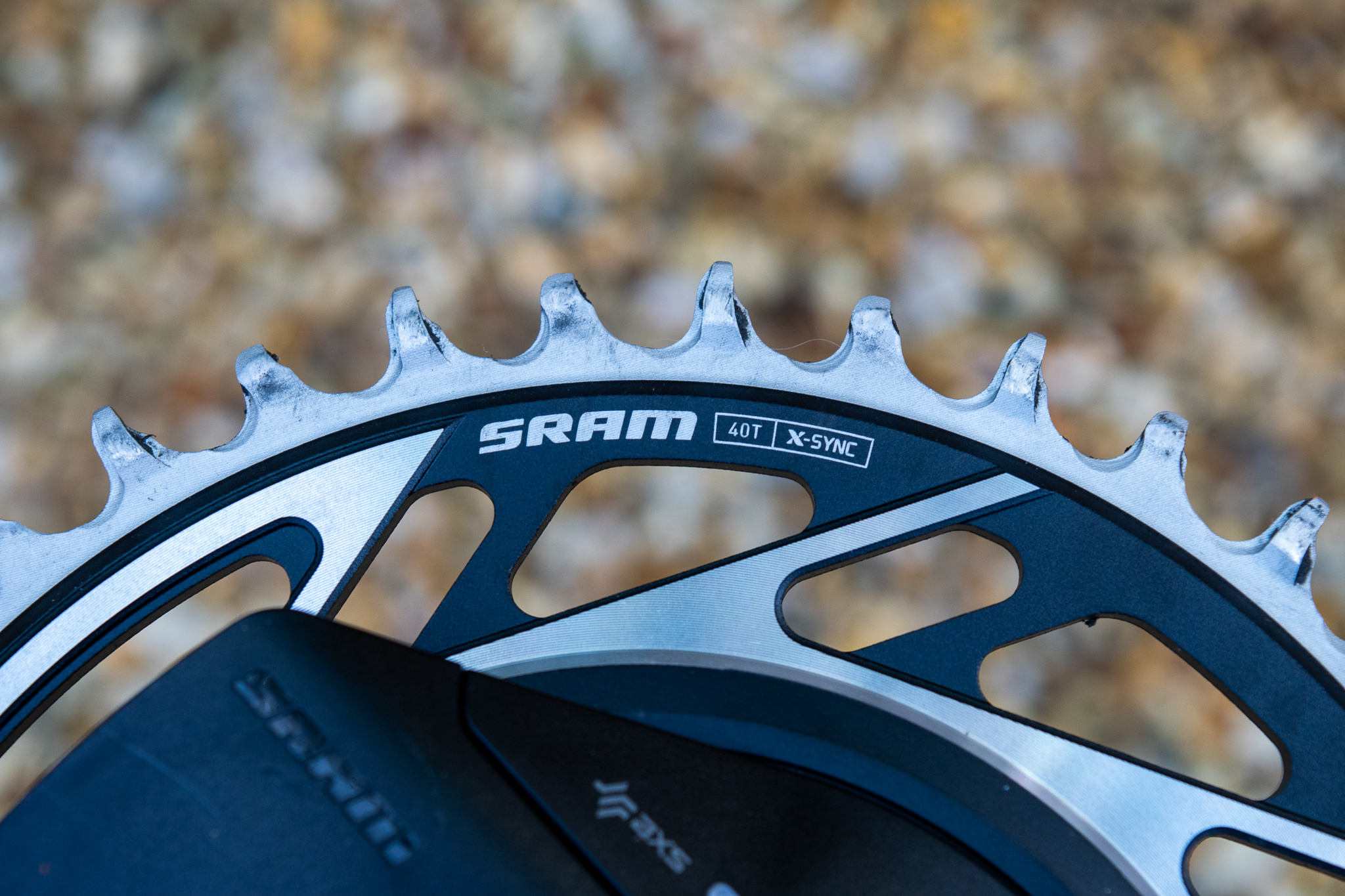
Value
After adding in the rest of the required bits from the Red AXS groupset, the XPLR groupset comes out at $4,031 with the dual-sided power meter option selected, or $3,581 for the non-power meter chainset. I have also included a standard DUB bottom bracket which has an RRP of $42 in these figures.
It's clear then that Red XPLR AXS carries a top-tier price tag. This groupset, like Red AXS, is aimed at being the best gravel groupset SRAM has ever produced and that performance level comes at a price.
If you can afford a complete bike build or like the look of the equipment and can afford it without having to think, then you are only going to be impressed, it should be clear by now that the performance is excellent.
There are, however, plenty of solidly performing gravel groupsets and equipment on the market for far less money. If I were debating things with friends, I'd say the shifters and braking performance are the really desirable bits of this groupset from an upgrade perspective, the braking really is that good. The shifters and brake callipers are backwards compatible, so this would be a great upgrade if you didn't want to go the whole hog.
I'm sure plenty of riders won't feel a desperate need to rush out and upgrade to a thirteenth sprocket, and that's fine. There are plenty of other lower-priced options on the market in SRAM's product lines and Shimano and Campagnolo's.
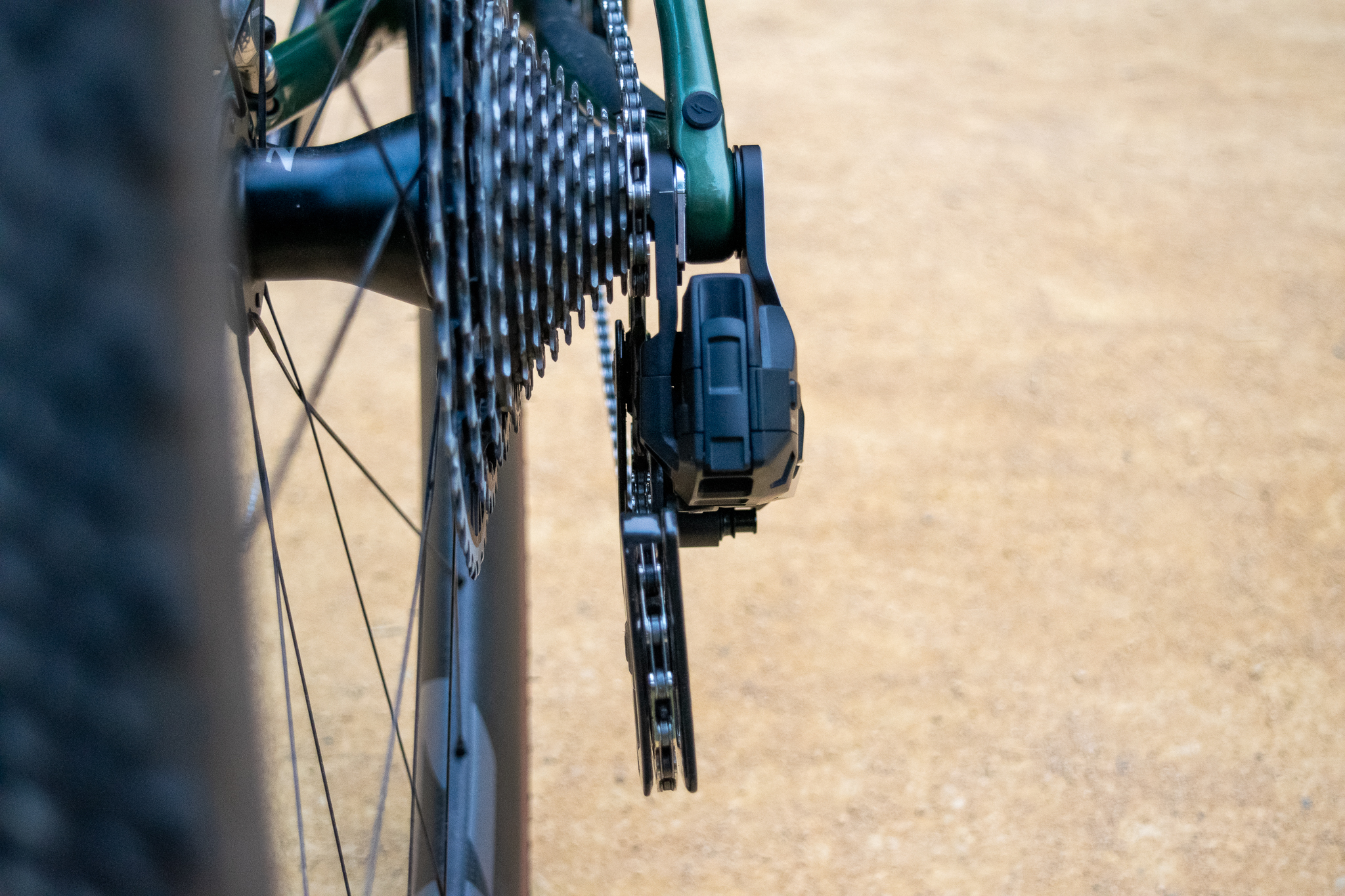
Verdict
SRAM highlights just how much has changed in the last decade when it comes to gravel-specific equipment, and just how large a part of the market it makes up now. At the sharp end, top-level gravel riding is very specific, competitive and fast. The days of mish-mashed road components and chainstay slap are long gone.
The XPLR derailleur is burly and strong, it's going to stand up to a lot. Shifting and braking have been excellent across every terrain.
SRAM claims it designed Red XPLR AXS to be 'Resiliant, precise, light and fast. An effortless experience so your energy goes into the ride'. And I agree with this summary. In my testing, the groupset has proven to be all of those things, and in use I just haven't had to think too much, just enjoy the ride.







